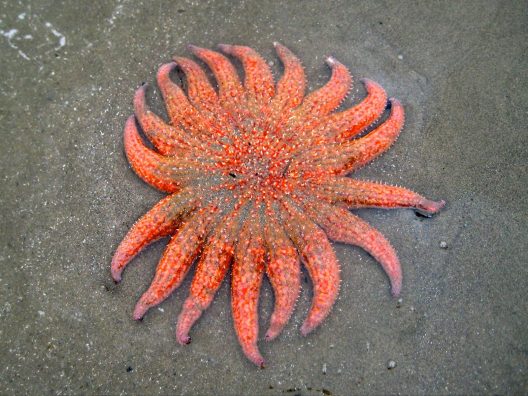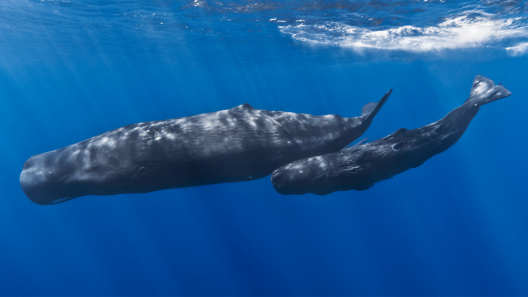An Ocean of Optimism
The start of spring brings a sense of renewed optimism to the world. The sun is shining, flowers and new plants give color to the landscape, and baby animals pop up all around. It’s a cheery time of year and the perfect time to look at the many marine conservation successes. There are many ways to find hope in marine conservation, one of which is through Ocean Optimism. Ocean Optimism is a movement started on Twitter back in 2014. The main idea was to share good news and work that is being done to solve marine challenges. It aims to combat all of the doom and gloom that characterizes a large portion of environmental news and to inspire action. In the spirit of Ocean Optimism, I’m sharing some of the discoveries and stories that gave me hope over the past year.
Most recently, a research team set out to document seamounts off of the coast of Costa Rica. They got a whole lot more than just seascape data, though, as they discovered four new species of octopus! One of the octopus species was observed using hydrothermal vents in a seamount as an incubator for their eggs, speeding up their maturation time. While three of the species were relatives of more familiar octopuses, the fourth was a species that was completely novel. These discoveries broaden our understanding of octopus behaviors and show just how much there is still left to discover in the ocean.

Along the lines of the octopus discovery, a new species of sea squirt was recently described in Japan! This sea squirt is especially neat because its body looks a bit like a panda. Locals began referring to the new species as the “skeleton panda sea squirt” and scientists liked it so much that they named the creature Clavelina ossipandae, with Clavelina (“little bone”) and ossi (“bone”) both referencing bones and pandae referring to the sea squirt’s resemblance to a panda. This new species is an amazing discovery and also highlights how social media can be used to advance scientific understanding. Naohiro Hasegawa, a Japanese sea squirt researcher, found it through X (formerly Twitter) when he was scrolling through photos. This inspired his study that collected specimens to establish the taxonomic status. This shows the positive role that social media can play in scientific discovery.
While discovering new species is always exciting, seeing endangered species begin to recover can be even more inspiring. Hope can be found in recent successes in breeding the endangered sunflower sea star. This species has experienced a sharp population decline in recent years across its range from Mexico to Alaska. This has been attributed primarily to the sea star wasting disease, an illness that causes sea stars, especially sunflower stars, to decay and die. To bolster their numbers, the Association of Zoos and Aquariums brought together a team of five aquariums and research institutions to spawn and fertilize sunflower sea star specimens. In February of this year, they had success and created fertilized eggs that will be cultured into larvae and, hopefully, adult stars. Project partners at Friday Harbor Labs in Washington have already been successful in nurturing larvae into juvenile sunflower stars, and are working to provide a roadmap that would allow the project to increase its captive breeding success. This has been a huge success in the fight to save the sunflower sea star and gives hope for the future of conservation.

In another win for endangered species, Dominica has created the first Marine Reserve for Sperm Whales. Sperm whales are a huge tourism draw in the region and each whale can sequester the amount of carbon equal to 18,000 acres of forest each year, providing social and environmental benefits. This new reserve creates a senior whale officer role that manages a team of observers who monitor the tourism and research vessels in the region. This reserve protects the sperm whales from disturbances related to fishing and tourism activities while decreasing the chances of the whales becoming entangled in fishing gear or being struck by ships. While this move protects the whales and other species in the region it also supports the artisanal fishers of the region by allowing their small-scale practices to continue. Between supporting local fishers and encouraging responsible tourism, the reserve builds community support and creates a system where the costs are offset by the economic benefits.

Marine reserves and other ecosystem protections have the ability to help species like the sperm whale to recover, and can also allow ecosystems to heal after disturbances. This healing can be seen in the resilience of marine protected areas after disturbances caused by bottom trawling. Bottom trawling is a fishing method that involves dragging heavy nets across the seafloor to catch seafloor-dwelling species. The Lyme Bay MPA in the United Kingdom was designated in 2008 after the area was heavily trawled and degraded. Since then, the protected space has shown a 95% increase in reef species, and fish abundance increased by over 400%. This success is an example of how collaborative management between governments, local communities, scientists, and fishers can create lasting success in ecosystem recovery.
The news that we hear about the marine ecosystem is frequently negative. Between pollution, overexploitation of marine resources, and anthropogenic climate change, the bad news can seem overwhelming. Despite this, there have been significant wins in marine conservation and restoration. Giving a spotlight to the positive news not only builds optimism for the future but also encourages us to increase our efforts as we see that the future is far from hopeless. For more Ocean Optimism check out their website or follow #OceanOptimism on X.